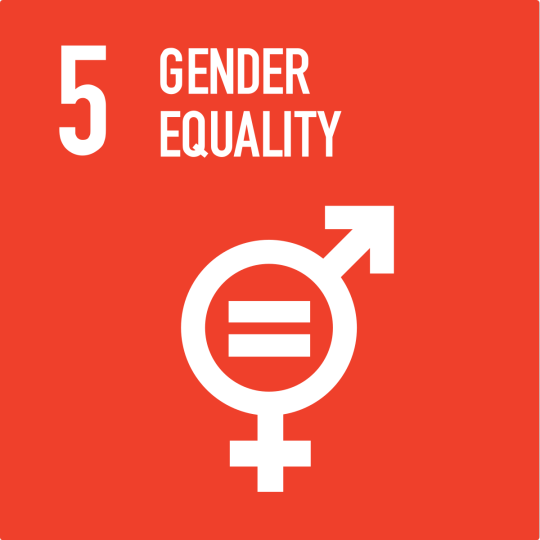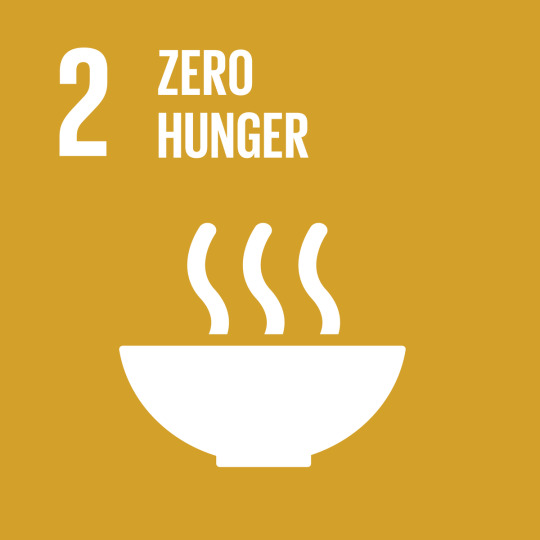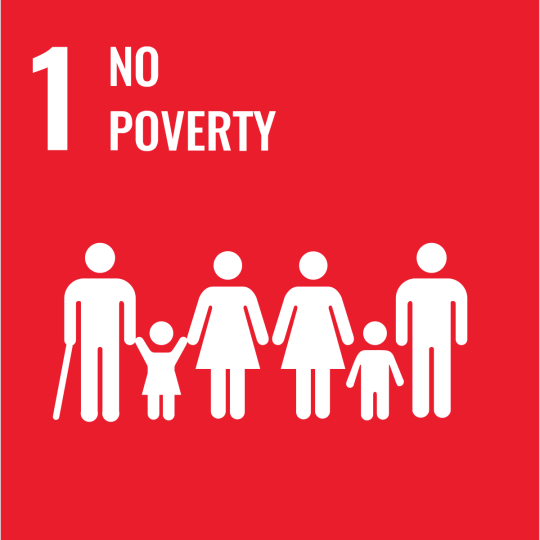Text

We all deserve to live in a world where everyone has access to clean running water and sanitation and our freshwater ecosystems are safeguarded for the future. Water is our most precious resource. It sustains life everywhere. And we all have a role to play in helping the UN achieve this goal by the year 2030. Water is the driving force of all nature. Every cell in our bodies relies on it to function as it should. Water is needed for all life on Earth, but while the surface of our planet is covered in 71% water, only a small percentage of it is safe to drink and it's unevenly distributed around the world. Demand for our water is increasing. Over the past century our global population has tripled, yet the total water supply available remains the same.
Today, over 1 billion people are unable to access clean drinking water. It affects all aspects of their lives. It forces women and children to make long treacherous journeys for a bucket of fresh water. It allows communicable diseases like cholera and typhoid to spread where there are inadequate sanitation facilities or none at all, placing huge strain on governments and NGOs that dedicate valuable resources to make clean water available to all. But progress is being made worldwide. Foreign aid donated by governments and humanitarian organizations like UNICEF have brought improved drinking water sources to 90% of the world's population and improved sanitation to two-thirds. Innovative products like the LifeStraw, a cigar-shaped filter that purifies contaminated water, are making it possible for the poorest to access clean drinking water and helping to eradicate guinea worm disease across the African and Asian continents, while a new invention created by the Bill Gates Foundation, the Janicki Omni processor, turns sewage into clean drinking water and renewable energy, neatly tackling sanitation, water and energy problems all at once. Simple solutions could save lives and help give everyone access to clean water and sanitation by the year 2030.
2 notes
·
View notes
Text

We all deserve to live in a world where women and girls are respected as full members of society and treated equally to their male counterparts in terms of their rights, opportunities for employment and education, control over their own health, and ability to contribute to society. This simply isn't the case elsewhere in the world. To enable all women and girls to live their lives to the fullest, the United Nations has included gender equality as one of its 17 Sustainable Development Goals, which it hopes to accomplish by the year 2030. When girls have access to shelter, clean water, sanitation, education and safety, and are given the freedom to do simple things in life, like play with friends, read books and travel, they become empowered to think for themselves, act for themselves, and determine their own destinies. When this happens, girls are much more likely to attend school, become skilled, get jobs, have families, buy homes, fulfil their ambitions and make a positive impact on the world around them. Gender equality should be a fundamental right, but girls and women are not treated equally in countries all around the world for all sorts of reasons. Society plays a big part in how gender roles are assigned. The values, core beliefs, and inherited customs that govern how people behave can be discriminatory and limit how women live their lives. In some countries, laws prevent women from owning property or receiving an inheritance from a family member. In many cultures, child marriages are still acceptable, with some girls as young as 8 promised to men twice, three, or four times their age. This leaves the girl open to abuse, neglect and complications during childbirth. Even in places where men and women technically have equal rights, there still may be a gender gap in pay, leadership and representation in government. Great people continue to make progress worldwide: exposing systemic abuse toward women in the film and television industries with powerful social media campaigns, investing in female entrepreneurs to reduce the current funding gap between women and men, providing women and girls with equal access to education, healthcare and decent work. And the number of women leaders has doubled since 2000, so that their say in political and economic decision-making processes can fuel sustainable economies and benefit societies and humanity at large. We can all work together to achieve gender equality and empower all women and girls worldwide by 2030.
3 notes
·
View notes
Text

Everyone has the right to a high-quality education with access to qualified teachers, learning materials, and opportunities that go beyond the acquisition of rudimentary literacy and numeracy skills. We can build a society where everyone is treated equally if we have a better understanding of the world and our place in it. The quality of education, however, varies greatly around the world even while more students than ever before have access to education. The UN has included providing all people with a high-quality education as one of its 17 Sustainable Development Goals. Children who are able to learn develop the skills necessary to support themselves as adults and contribute significantly to their communities. Their imaginations and minds develop as a result of schooling. They are given the best possible start in life and learn to be imaginative, analytical, and empathic. In some parts of the world, lots of money is spent on making sure that schools have access to the Internet, computers, books, and everything they need to help students learn. In the 1940s, Costa Rica ended their military program, and decided to spend that money on education-leading to a literacy rate of almost 98%. These countries not only believe that education forms the cornerstone for democracy and modern society; they also have the resources to invest in this commitment. Have you ever thought about what it would be like if you couldn't go to school? All around the world, millions of children and adults are starving for education. They are refused access to information they cannot afford to learn. And some have to leave school to earn money for their family, or the schools they do have don't have enough materials. The class sizes are too large, and there is a shortage of teachers. Thankfully, good people everywhere are working together and progress is being made. Global literacy levels have risen 17% in the last 30 years, and projects like E-Rate in the U.S. are connecting rural schools to the Internet. The UN are working with governments and charities to build schools and libraries in developing countries and provide safe spaces where students can learn about creating sustainable lifestyles that help the planet and develop technical and trade skills for future employment. We can continue this great work together in achieving quality education for all by 2030.
2 notes
·
View notes
Text
Everyone deserves the right to be physically and mentally healthy. It's why the UN have made good health and well-being for all a global priority. Health is defined in a variety of ways. When we get a check-up with a doctor things like our weight, our behaviour and genetics are important. We measure the health of communities and nations by talking about things like life expectancy, number of doctors and nurses, mortality rates, and the cost of medicine. But what does a healthy country look like? If you want to beyond the age of 80, you should think of moving to Italy. One of the largest countries in Europe, it's officially the healthiest country in the world. Why is that? Italians live on a healthy Mediterranean diet consisting of fresh fruits, vegetables, fish, dairy products, olive oil and red wine. They eat pizza too, but everything in moderation. Italians have access to free healthcare, clean water, education and the number of doctors working there is high but it's not the same everywhere. Unhealthy habits can have a negative effect on our health and well being. When we eat unhealthy foods, drink too much alcohol, and smoke cigarettes, we can become sick with non-communicalbe conditions like obesity and heart disease. But our health and well being is also subject to change from external forces. Unhealthy infrastructure like poor sanitation and lack of clean running water can lead to the spread of communicable diseases like malaria, diarrhea, and flu- some of the leading causes of death in developing countries. And under-resourced, mismanaged healthcare systems can worsen the spread of non-communicalbe diseases because they don't have the doctors or nurses to treat patients or the money to pay for medicine. And in countries where healthcare is not free, lots of people cannot afford the care they need. But it's not all bad news. In fact the signs are good ! Between the years of 2000 and 2015, global life expectancy increased by five years. That's because governments are partnering with health organisations everywhere to invest in better infrastructure, trained doctors and nurses, and eradicate diseases like polio. In countries like Uganda, professional midwives are giving more women access to safe delivery during pregnancy, and in research hospitals all around the world scientists are working on new vaccines and cures. Our health is connected to the health to everyone on the planet as illnesses know no borders; but neither do cures. If we pay attention to our own health and well-being then we can make the world a happier, healthier, more prosperous place.

2 notes
·
View notes
Text
Hunger is something that affects people everywhere : in the developing nations where poverty is rife, in war zones where there are severe food shortages, even in rich countries where there is great inequity. Have you ever considered the true cost of a plate of food? Take a simple bowl of bean stew - how much do you think it costs? It depends where you buy it. According to the World Food Programme, in New York a bowl of bean stew cost $1.20, but in South Sudan an astronomical $320. Discrepancy in food prices worldwide adds to the global hunger crisis, but why is it happening? Climate change has a big part to play. South Sudan is located in Central Africa. With temperatures soaring due to climate change, it's difficult to grow food, and importing food from other countries is not always easy. Inadequate infrastructure makes it difficult to transfer from place to place, so what food does grow becomes excessively expensive. Food is much more affordable in places like New York; still, people there wonder where their next meal would come from because of unemployment, high housing costs, medical bills or countless other living expenses. Millions of people in New York city alone are struggling to feed their families. They rely on food assistance programs or donations, they purchase cheaper and less nutritious food, or they simply go without. Hunger is not only about the cost of availability of food, it's about everyone having equal and reliable access. The UN aims to achieve zero hunger by the year 2030. The signs are good with the number of people going hungry halved over the past 25 years. Agricultural productivity has improved, economic growth has enabled countries to tackle problems like undernourishment, food insecurity and price discrepancy, wasted food is being recycled and used to grow more food, packaging has been made edible and reduced in size and sustainable food systems are being developed. Everyone should have access to affordable healthy food. Together we can make zero hunger a reality.

2 notes
·
View notes
Text

The United Nations plans to end the world poverty by 2023 it's the first of 17 Sustainable Development Goals designed to make the world a better, safer and fairer place. But have you thought about what that actually means, poverty means not being able to afford simple things like food , water, healthcare or a safe home. You may already have some idea what that looks like. Poverty happens everywhere but it's not the same for everyone. Sometimes it affects entire countries and generations of families, other people may suffer from situational poverty which are caused by some events like an illness or losing a job or systematic poverty caused by inequality or discrimination. The main thing is poverty can affect anyone anywhere, and right now a mass of 700 people live on $1.90 a day. Think about the whole world as just 10 people , as at least 1 of them will have $2 a day to live on. Could you do that? Why don't we just print a big pile of money and give it away? Well it's complicated. One of the reasons poverty is such a big challenge is because it can have many different causes. Imagine there's a natural disaster in your city, damage to buildings might mean you wouldn't have a home. If businesses closed down there would be less jobs, and poor health care or sanitation can lead to disease which can mean choosing between paying for medicine or food. And poverty can cause other problems. Not being able to afford a place to live to lead discrimination. Without a permanent address it can be harder to access public services or open a bank account. Poverty even forces some young people to work instead of getting an education, and sometimes it's as simple as no money means no food. You might think there will always be poverty and it's just something we have to live with, but it's actually getting better. Since 1990, 1.1 Billion people have moved out of poverty. That's about the same as the population of Europe and the USA combined. combined. The government has invested in economic growth, charities have raised money and awareness through campaigns, and individuals have come up with innovative solutions like drought-resistant crops and inexpensive solar power. So what can you do about poverty right now in your own city?
2 notes
·
View notes
Text

Did you know that the United Nations sustainable development goals are a universal call to action that unites 193 countries around the world. If these goals are fulfilled by 2030 , life on earth will be better for everyone. So what are these goals, eliminate poverty in all its forms, no hunger everyone should have safe nutritious and sufficient food, everyone has equal access to health care thus ensuring our well being and healthy life, equal access to quality education, ensure gender equality where women and girls have the same opportunities as men and boys, by achieving these goals each member of our society will be equal, safe and happy. UN global goals also include access to safe drinking water and sanitation, access to clean energy that is safe for people and the environment, sustainable and stale economic growth everyone has a decent job, strong infrastructure and the support of innovations, lower inequality within and among countries cities and settlements being developed without damaging the environment and people and achieving these goals will result in the well-being of people and our planet we can further take care of our environment with the following goals sustainable and safe production and consumption of products take urgent measures to reduce climate change and its impact ensures the sustainable use and protection of ocean and sea resources restore and protect Earth's ecosystems by achieving these goals we will form a society where strong institutions ensure peace and justice, it is important for everyone to be involved and to build partnerships for achieving sustainable development goals you are part of this process demand the implementation of these goals and take the lead share information with your friends.
2 notes
·
View notes